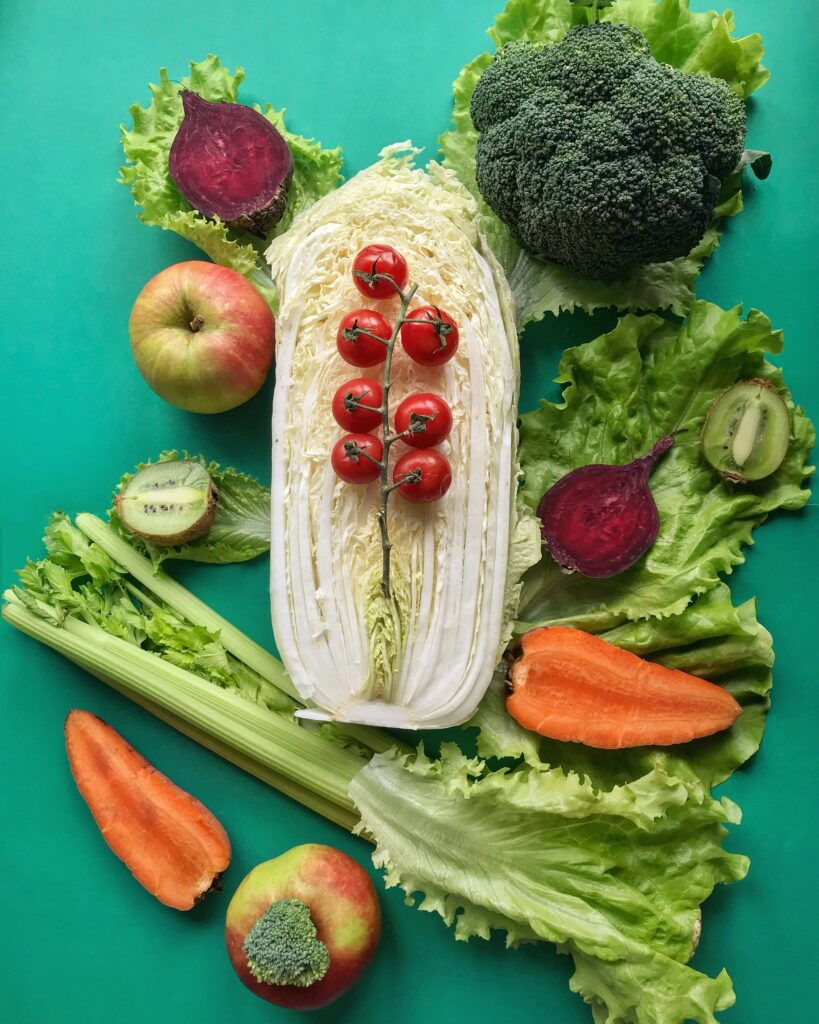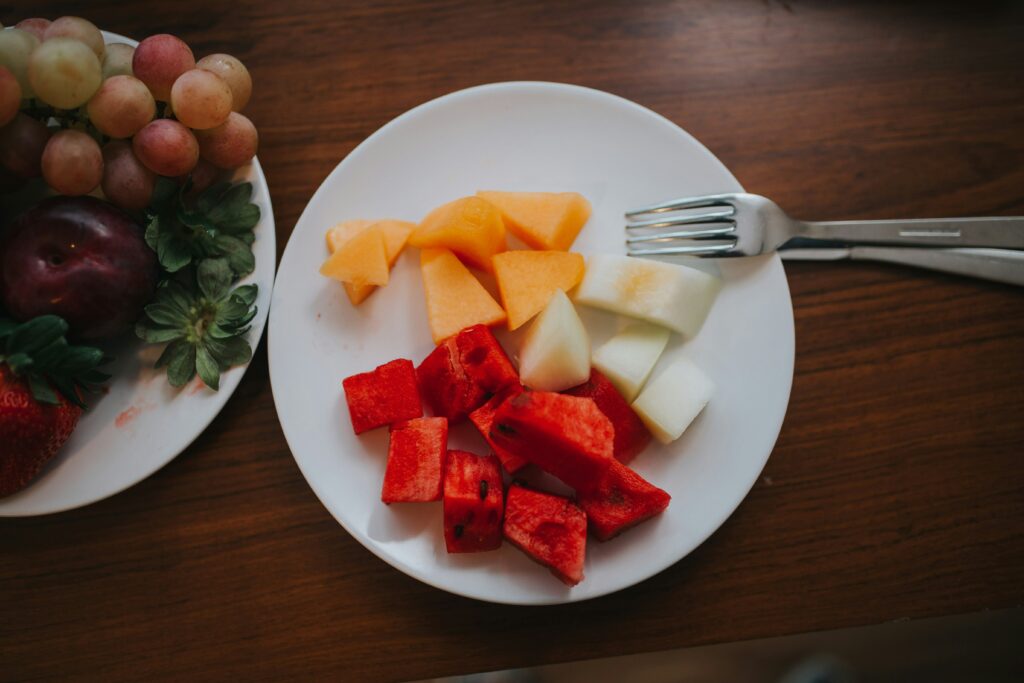The Nutritarian Diet, also known as the nutrient-dense, plant-rich diet (NDPR), is designed to maximize health by prioritizing foods packed with vitamins, minerals, and antioxidants while limiting calorie-dense, processed options.
This eating style has gained attention for its claims of promoting sustainable weight management, slowing the aging process, and even preventing or reversing chronic diseases such as diabetes and heart disease.

But is the Nutritarian Diet truly effective, and is it realistic to follow in the long run? Let’s take a closer look at how it works, its benefits, potential downsides, and what a day on this plan might look like.
What Is the Nutritarian Diet?
At its core, the Nutritarian Diet emphasizes nutrient density — meaning the number of essential nutrients you get per calorie consumed. Instead of focusing strictly on calories or macronutrient ratios, it encourages people to load their plates with vegetables, fruits, legumes, nuts, seeds, and limited amounts of whole grains and animal products.
The idea is that by choosing foods that deliver the most nutrients per bite, you can naturally improve overall health, maintain a healthy weight, and reduce the risk of chronic illness.
This approach is largely plant-based, low in salt, low in fat, and discourages processed foods. Unlike many restrictive diets, the Nutritarian Diet doesn’t require calorie counting or portion tracking — but it does come with specific guidelines about how much of each food group should make up your daily intake.
How to Follow the Nutritarian Diet
The Nutritarian Diet has a structured framework that assigns recommended percentages of calories from each food category. Here’s what a typical breakdown looks like:
-
Vegetables (30–60%)
You’re encouraged to eat unlimited vegetables, with at least half of them raw. Leafy greens, cruciferous vegetables (like broccoli and cauliflower), and colorful varieties (like peppers and carrots) should make up the majority of your meals. Potatoes are usually excluded from this category. -
Fruits (10–40%)
Aim for at least 3–5 servings of fresh fruit daily. Whole fruits are preferred over juices or dried versions because they offer more fiber and less concentrated sugar. -
Legumes (10–40%)
Beans, lentils, and peas are staples of this plan. A minimum of ½ cup per day is recommended, providing fiber and plant-based protein. -
Nuts, Seeds, and Avocados (10–40%)
These foods are calorie-dense but nutrient-rich. A small daily portion — around 1 ounce (28 grams) — is encouraged, though larger amounts may be fine for those not aiming for rapid weight loss. -
Whole Grains and Starchy Vegetables (≤20%)
Whole grains, sweet potatoes, and corn are allowed but limited. If you’re trying to lose weight, intake is usually capped at about 1 cup of cooked starches per day. -
Animal Products (≤10%)
Meat, dairy, eggs, fish, and seafood are optional but recommended in very small amounts, less than 8 ounces (225 grams) per week. -
Minimally Processed Foods (≤10%)
Foods like tofu, tempeh, sprouted grains, and minimally processed breads are allowed in moderation. -
Processed Foods and Sweets (Minimal)
Sugar, refined oils, soda, and factory-farmed animal products are strongly discouraged.
Other notable rules:
-
No snacking — Meals should be filling enough to reduce the need for in-between eating.
-
Daily salad — At least one meal per day should consist of a large vegetable salad topped with a nut- or seed-based dressing.
-
Limited sodium — Salt intake should stay under 1,000 mg per day.
Some followers also supplement with vitamin B12, vitamin D, iodine, and zinc to cover potential nutrient gaps.
Can the Nutritarian Diet Help With Weight Management?
Yes — the Nutritarian Diet is often effective for weight management, primarily because it naturally reduces calorie intake while keeping you full and satisfied. Here’s why:
-
High in Fiber
Vegetables, fruits, beans, and seeds are loaded with fiber, which slows digestion, regulates blood sugar, and helps you stay full for longer. -
Lower-Calorie Density
By emphasizing foods that deliver fewer calories per volume (like leafy greens and beans), you can eat larger portions without overeating. -
Reduced Processed Foods
By avoiding added sugars, refined grains, and oils, you automatically cut out many “empty calories.” -
Limited Snacking
Without constant grazing, people often consume fewer calories overall.

In research, individuals following Nutritarian-style eating have experienced significant weight loss. For example, one study found that overweight adults lost nearly 11 pounds (4.9 kg) in just six weeks, while another showed long-term followers maintained weight loss over two years.
Overall, the diet supports steady, sustainable weight management — though its strict rules may not work for everyone.
Other Benefits of the Nutritarian Diet
Beyond weight management, the Nutritarian Diet may provide several science-backed health benefits:
1. Improved Heart Health
Plant-based diets are consistently linked to lower cholesterol, blood pressure, and risk of heart disease. Studies on nutrient-dense eating patterns show reductions in LDL (“bad”) cholesterol by up to 25%.
2. Better Blood Sugar Control
The diet avoids refined carbs and focuses on low-glycemic foods, which can help stabilize blood sugar. In people with type 2 diabetes, Nutritarian-style eating has been shown to reduce hemoglobin A1C levels — a key marker of long-term blood sugar control.
3. Reduced Inflammation
Antioxidant-rich fruits, vegetables, nuts, and seeds may help lower inflammation in the body, which is a major factor in chronic disease development.
4. Longevity and Disease Prevention
Diets high in plant-based foods and healthy fats are associated with longer lifespans and a reduced risk of chronic illnesses such as cancer and diabetes.
5. Nutrient Optimization
By design, the Nutritarian Diet provides a wide spectrum of vitamins, minerals, and phytochemicals that support immune function, energy levels, and cellular repair.
Potential Downsides of the Nutritarian Diet
Despite its strengths, the Nutritarian Diet does have some challenges and possible drawbacks:
1. Strict Rules
The percentage-based food guidelines and “no snacking” rule can feel rigid and may not suit everyone. People with busy lifestyles or cultural food preferences may find it difficult to stick with long-term.
2. Nutrient Deficiencies
By limiting animal products and certain whole grains, you may miss out on nutrients like vitamin B12, omega-3s, iron, and calcium without careful planning or supplements.
3. Hard to Sustain Socially
Eating out or attending social events can be challenging since the diet discourages many common foods.
4. Potential for Weight Regain
Rapid weight loss may slow metabolism, making it easier to regain weight if old habits return.
5. Not Evidence-Based in All Rules
Some guidelines, like eating 50% of vegetables raw or limiting grains to less than 20% of calories, aren’t strongly backed by scientific consensus.
Foods to Eat on the Nutritarian Diet
-
Leafy greens (spinach, kale, lettuce, arugula)
-
Cruciferous vegetables (broccoli, cauliflower, Brussels sprouts)
-
Non-starchy vegetables (tomatoes, zucchini, bell peppers)
-
Fresh fruits (berries, apples, oranges, mangoes)
-
Legumes (beans, lentils, peas, chickpeas)
-
Nuts and seeds (almonds, walnuts, chia seeds, flaxseeds)
-
Avocados
-
Whole grains in moderation (quinoa, brown rice, oats)
-
Starchy vegetables in moderation (sweet potatoes, corn)
-
Limited animal protein (wild-caught fish, eggs, lean poultry in small portions)
-
Minimally processed options (tofu, tempeh, sprouted grain bread)
Foods to Avoid
-
Processed meats (sausages, deli meats, bacon)
-
Factory-farmed animal products
-
Refined grains (white bread, white pasta, white rice)
-
Fried foods
-
Oils (especially refined oils like canola or vegetable oil)
-
Added sugars, desserts, candy, and pastries
-
Sweetened drinks (soda, fruit juices, energy drinks)
-
Excess salt or high-sodium packaged foods
Sample One-Day Menu on the Nutritarian Diet
Here’s what a day of eating might look like:
Breakfast
-
Green smoothie made with spinach, banana, berries, flaxseeds, and unsweetened almond milk
-
A small handful of walnuts
Lunch
-
Large salad with mixed greens, tomatoes, cucumbers, shredded carrots, chickpeas, and sunflower seeds
-
Dressing made from blended tahini, lemon, and garlic
Snack (if truly hungry)
-
Sliced apple with a tablespoon of almond butter (occasional snack despite guidelines)
Dinner
-
Lentil and vegetable stew with onions, zucchini, and bell peppers
-
Small portion of quinoa or brown rice on the side
Dessert
-
Fresh fruit bowl with sliced kiwi, berries, and a sprinkle of chia seeds
Final Verdict:
The Nutritarian Diet has clear health benefits and can support weight management. But its rigid rules may not be realistic for everyone. Those who thrive on structured eating patterns and enjoy plant-based meals may find it an excellent fit, while others might prefer a more flexible approach.
The Nutritarian Diet is a nutrient-focused, plant-rich approach to eating that encourages whole foods and limits processed options. For many people, it can lead to weight management, better heart and blood sugar health, and reduced disease risk.
However, it’s not without challenges. Its strict rules, social limitations, and potential nutrient gaps mean it may not be sustainable for everyone. With thoughtful planning and flexibility, though, it can be a powerful way to eat more plants, reduce processed food intake, and improve overall health.




